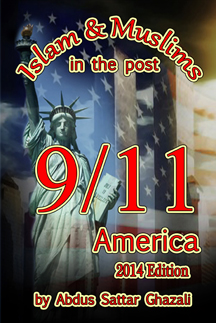Dailykos – March 24, 2019
Violent white supremacy is nothing new, especially in America
By Sher Watts Spooner
Martin Luther King Jr. famously said, “The arc of the moral universe is long, but it bends toward justice.” In a darker vein, the arc of bigotry and hatred is long, but it inevitably bends toward violence—and there’s no shortage of violence by right-wing terrorists these days.
The terrorist attack by a white supremacist who killed 50 people at two mosques in Christchurch, New Zealand, is just the latest in a series of attacks by angry white bigots, whether they identify as neo-Nazis, white supremacists, white nationalists, anti-Semites, the alt-right, or whatever new label they’re claiming, even as Iowa Rep. Steve King (R-Bigotry) wonders how those terms became offensive. The Southern Poverty Law Center reported that the number of hate groups in the U.S. is at an all-time high of 1,020. The FBI saw a rise in the number of domestic terrorist arrests in late 2018. White supremacists committed the most extremist killings in 2017, according to the Anti-Defamation League.
We are horrified by white supremacists' terrorist killings, such as the mass shooting in a Pittsburgh synagogue in October 2018 that killed 11 worshipers. Or the June 2015 shooting in a prayer service at a Charleston, South Carolina, African-American church that killed nine people. Or the 2014 shooting deaths of three people at a Jewish Community Center and a Jewish retirement community in Overland Park, Kansas, where the gunman yelled, “Heil Hitler!” Or the 2012 shooting in a Sikh gurdwara in a Milwaukee suburb that killed six people. Or the 2008 shooting in a Knoxville, Tennessee, Unitarian church that killed two people, done by a man who described his hatred for African-Americans (along with Democrats and liberals) to police after his arrest.
As the New Zealand attack shows, the white supremacist movement is not limited to the U.S. One of the worst incidents was a 2011 terrorist attack in Norway in which an anti-immigrant extremist, Anders Breivik, killed 77 people through a bombing and a mass shooting. The New Zealand shooter’s “manifesto” listed the Norwegianperpetrator as an inspiration, as did the writings of a Maryland Coast Guard lieutenant who planned a mass attack but was arrested in February before carrying out his scheme. The term “going Breivik” is used by those in white supremacist circles to show a full commitment to the cause.
Racism has always existed and persisted in human history. In the U.S., the subjugation of Native Americans by killing them and taking their land and the institution of slavery itself are by definition violence by white supremacy.
The modern movement, however, really solidified after the Civil War.
An opinion piece by MSNBC’s Chris Hayes in the online journal Think describes how the roots of modern white supremacy started as a backlash to Reconstruction. Every time there is progress, there is a reaction against that progress that pushes in the other direction. The most recent rise in white supremacy, first as a reaction to the election of Barack Obama but even more so after the election of Donald Trump, is more of the same.
Slavery is conquered at Appomattox, then followed by the evils of Jim Crow, which are conquered by King and the civil rights movement, followed by an era that leads to the first black president.
But this story, and the analogy of the long imperceptibly trending line of progress, is wrong. It does not allow for what is perhaps the most significant feature of the story of racial justice in America: backlash and backwards movement. And 50 years after King's death, that’s the most brutal reality we must confront. ...
What happened after Reconstruction was a concerted effort of white supremacist terrorism, violence and reaction that choked off equality and reasserted white rule in the South. The moral arc of the universe during that time didn't just flatten, it actually bent in the other direction — and sharply so. …
That is the movement to preserve American racial hierarchy and white supremacy. It has gone by different names at different times, but it has not ceased to alter the trajectory of American history.
There are multiple examples of that trajectory in U.S. history. Here are just a few.
Lynchings in the 19th and 20th centuries
What can you call lynchings but white supremacist terrorism? The NAACP counts 4,743 lynchings between 1882 and 1968, admitting that the number is likely low. Of those lynched, 72.7 percent were black. The rest were white, and many of those were lynched for helping African Americans or for committing other crimes, mostly in Western states. “Whites started lynching because they felt it was necessary to protect white women,” the NAACP says on its History of Lynching page. In addition:
Most of the lynchings that took place happened in the South. A big reason for this was the end of the Civil War. Once blacks were given their freedom, many people felt that the freed blacks were getting away with too much freedom and felt they needed to be controlled. Mississippi had the highest lynchings from 1882-1968 with 581. Georgia was second with 531, and Texas was third with 493. 79% of lynching happened in the South.
Madison Grant
The formal father of the white supremacy movement was a patrician New Yorker named Madison Grant. His 1916 book, The Passing of the Great Race, inspired Adolf Hitler’s Nazi movement as it used racist pseudoscience to “spread the doctrine of race purity all over the globe.” From an overview of that influence in The Atlantic:
Grant’s purportedly scientific argument that the exalted “Nordic” race that had founded America was in peril, and all of modern society’s accomplishments along with it, helped catalyze nativist legislators in Congress to pass comprehensive restrictionist immigration policies in the early 1920s. His book went on to become Adolf Hitler’s “bible,” as the führer wrote to tell him. Grant’s doctrine has since been rejuvenated and rebranded by his ideological descendants as “white genocide” (the term genocide hadn’t yet been coined in Grant’s day). In an introduction to the 2013 edition of another of Grant’s works, the white nationalist Richard Spencer warns that “one possible outcome of the ongoing demographic transformation is a thoroughly miscegenated, and thus homogeneous and ‘assimilated,’ nation, which would have little resemblance to the White America that came before it.”
Sovereign citizen movements
The term covers several right-wing, often white supremacist groups that reject federal authority. The Posse Comitatus Act, literally, “power of the county” in Latin, was passed in 1878 to prohibit the use of federal troops to enforce Reconstruction policies, specifically in Southern states. The act was amended in the 1980s to allow the government to use the military to fight drug trafficking but still limits the use of U.S. soldiers on American soil.
The Posse Comitatus movement was started in 1969 as a right-wing, anti-tax extremistgroup. It was founded by William Potter Gale, an anti-Semite and member of a Nazi-inspired organization called the Silver Shirts. Its proponents claimed to recognize only a county sheriff as a legitimate holder of government power. There were acts of anti-government resistance and violence throughout the country that resulted in the deaths of several members of law enforcement. Other such groups include the Montana Freemen, the Christian Identity movement, militia movements, and the “township” movement, which also recognized only small local groups as legitimate government.
“The key distinguishing characteristic of the sovereign citizen movement is its extreme anti-government ideology, couched in conspiratorial, pseudohistorical, pseudolegal and sometimes racist language,” according to an explanation by the Anti-Defamation League.
Oklahoma City bombing and The Turner Diaries
The 1995 bombing of the Alfred P. Murrah Federal Building in Oklahoma City is remembered as an anti-government act by its two perpetrators, Timothy McVeigh and Terry Nichols—and it was, as a continuance of the militia movement. But the two were strongly influenced by The Turner Diaries, a 1978 dystopian novel by William Luther Pierce, published under the pseudonym "Andrew Macdonald." The plot of the book revolves around “a United States where non-white minorities have disarmed and oppressed white Americans, leading to an armed white nationalist revolution.” It is described in an Atlantic article as “crudely written and wildly racist.”
The Turner Diaries first made headlines when a violent white nationalist gang appropriated the name of The Order, following the tactical blueprint for terrorism in the book. Turner catapulted to national prominence when it was revealed to be a key inspiration for Oklahoma City bombing conspirator Timothy McVeigh, who killed 168 people using a truck bomb strikingly similar to one described in detail in the book. Since then, The Turner Diaries has inspired hate crimes and terrorism across the United States and in Europe in more than a dozen separate plots through the present day. …
While it would be a mistake to credit The Turner Diaries for the entirety of this transition in white nationalism, the novel demonstrated how to successfully leverage racial fears and resentments in the service of violence, without a call to a specific ideology, and the book remains widely influential today.
While Turner is rightly infamous for the violence it has inspired, most notably in Oklahoma City, its impact on the shape of white nationalism—and the movement’s current resurgence—is an equal part of its dark legacy.
There’s a long list of people pushing the hatred of white supremacy on social media, on right-wing extremist websites, on YouTube videos, and on right-wing radio. But when the language of a white supremacist killer half a world away is echoed by the president of the United States, we cannot—and must not—be silent.

The Journal of America Team:
Editor in chief:
Abdus Sattar Ghazali
Senior Editor:
Prof. Arthur Scott
Disclaimer and Fair Use Notice: Many articles on this web site are written by independent individuals or organizations. Their opinions do not necessarily reflect those of the Journal of America and its affiliates. They are put here for interest and reference only. More details
Your donation
is tax deductable.
Article by
Journal Writes



